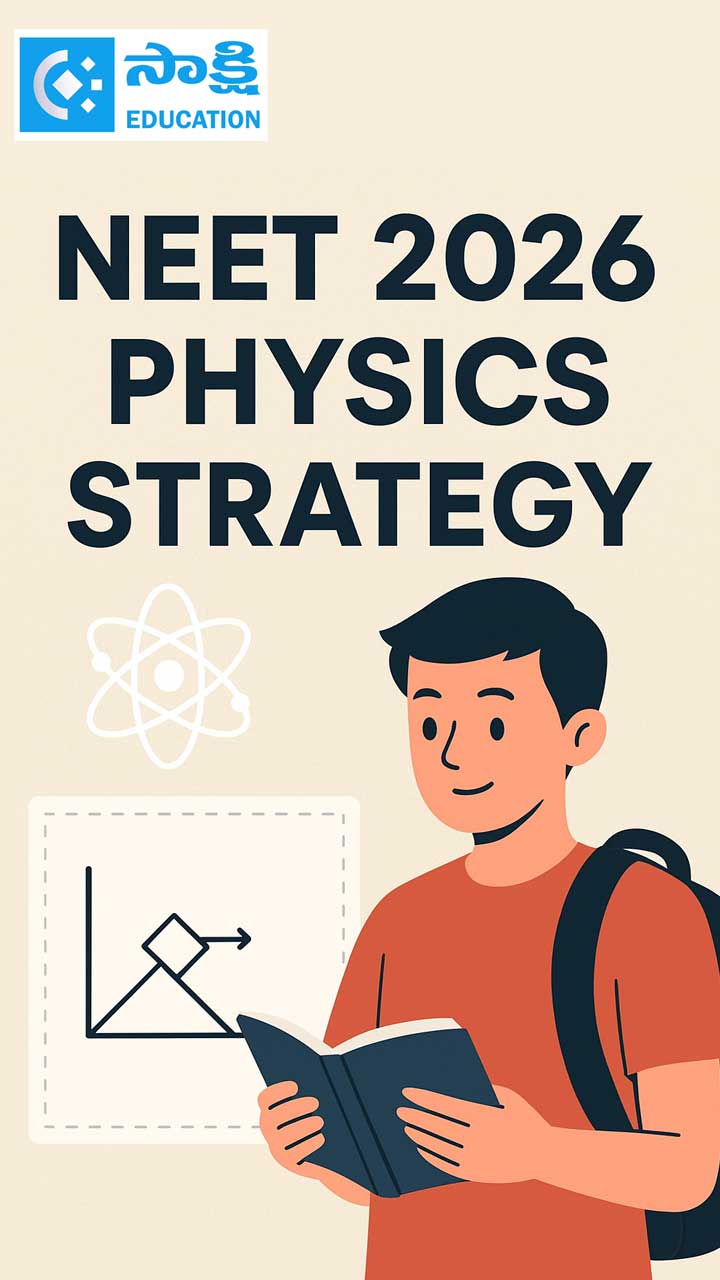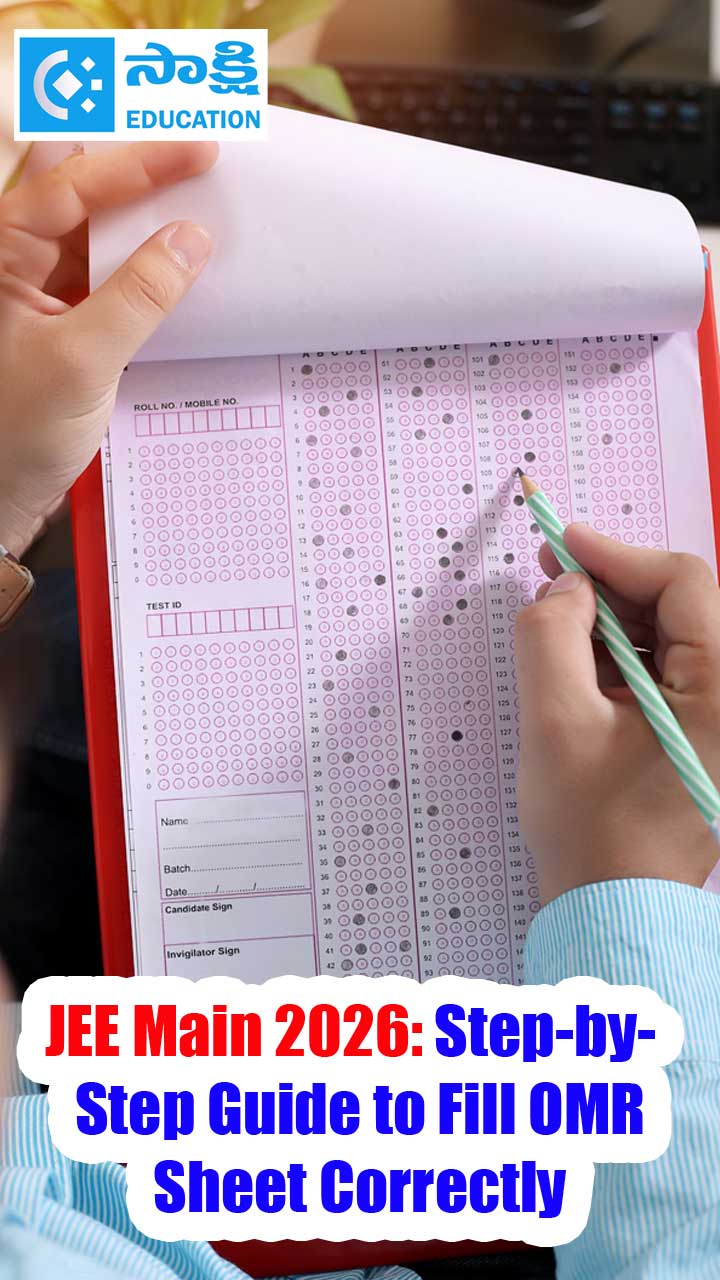3.Transportation – The Circulatory System
3. Transportation – The Circulatory System
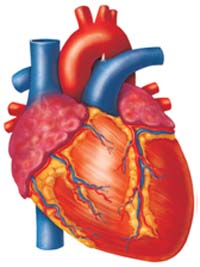
Synopsis:
- In human beings, the transport of materials such as oxygen, carbon dioxide, food and excretory product is a function of the circulatory system.
- The circulatory system consists of the heart, blood and blood vessels.
- Heart is the vital organ of human beings and it is the beat of the heart that makes us alive.
- The size of our heart is approximately the size of our fist.
- The heart is a pear shaped structure, triangle in outline, wider at the anterior end and narrower at the posterior end.
- The heart is covered by pericardial membrane which is filled with pericardial fluid which protects the heart from shocks.
- The heart is divided into four chambers. Two upper chambers are called atria, and the lower ones are called ventricles.
- The coronary vessels supply the blood to muscles of the heart.
- The walls of the ventricles are relatively thicker than the atrial walls.
- There are 6 blood vessels attached to the heart. Of these two blood vessels are rigid and the four are less rigid.
- The two atria and the two ventricles are separated from each other by muscular partitions called septa.
- The openings between atria and ventricles are guarded by valves.
- The superior vena cava collects deoxygenated blood from upper parts of the body and inferior vena cava collects blood from lower parts of the body and opens into right atrium.
- The largest artery Aorta which arises from the upper part of the left ventricle supplies oxygenated blood to the body parts.
- Pulmonary artery which arises from the right ventricle supplies deoxygenated blood to the lungs.
- One way walls which permit blood to flow in one direction were noticed in the veins of legs by Girolamo Fabrici (Italy) in 1574.
- But Fabrici failed to notice the movement of blood in the leg veins only to the heart.
- William Harvey dissected the hearts of dead people and studied the valves between each atrium and its ventricle and noticed that they were one way walls.
- Marcello Malphigi with the microscope saw the tiny blood vessels and identified that smallest arteries and veins were connected by very fine blood vessels called capillaries.
- Arteries are the blood vessels that carry blood from heart to body parts and veins carry blood from body parts to heart.
- Arteries carry oxygenated blood away from the heart and veins carry deoxygenated blood towards the heart.
- Blood capillaries establish continuity between arterioles and venules. In other words arteries end in capillaries and veins start from capillaries.
- Atrium and ventricle of the same side are connected by atrioventricular aperture.
- The human starts beating around the 21st day during the embryonic development.
- Atria are separated from each other by inter-atrial septum and ventricles by inter-ventricular septum.
-
One Contraction and One Relaxation of Atria and Ventricles Is Called One Cardiac Cycle (Heart Beat).
- The right side of the heart receives blood from body and sends to lungs, while left side of the heart receives blood from the lungs and sends to body parts.
- The cardiac cycle includes an active phase systole and a resting phase diastole of atria and ventricles.
- The arteries carry oxygenated blood except pulmonary artery.
- The veins carry deoxygenated blood except pulmonary vein.
- The cardiac cycle is completed approximately in 0.8 seconds.
- The time needed for atrial contraction is 0.11-0.14 seconds and the time needed for ventricular contraction is 0.27-0.35 seconds.
- Rate of pulse= Rate of heart beat.
- In unicellular organisms like amoeba, the protoplasm shows Brownian movements because of which the nutrients and oxygen are distributed throughout the protoplasm equally.
- Sponges use sea water for transportation by beating of flagella that are present in their body.
- In cnidarians, sac like gastro-vascular cavity digests the food and transports nutrients to each and every cell of the body. Eg: Hydra, Jelly fish.
- In platyhelmenthes, digestive system supplies food to all the cells directly and excretory system collects wastes from each cell individually. Eg: Fasciolla hepatica.
- In nemathelminthes, the pseudocoelom has taken function of collection and distribution of materials.
- In annelids, the first Eucoelomate animals have developed a pulsative vessel to move the fluid and the transporting medium is blood.
- The arthropods have developed a pulsative organ heart to pump the blood.
- The transport system that supplies nutrients to tissues directly is open type of circulatory system. Eg: Arthropods, many Molluscs and lower chordates.
- In closed type of circulatory system, blood flows in blood vessels and it supplies nutrients to the body. Eg: Cephalopod mollusks and octopus.
- Tissue fluid is the liquid portion of blood with nutrients that flows out of the capillaries.
- Lymphatic system transports the tissue fluid into the main blood stream.
- In single circulation, blood flows through the heart only once for completing one circulation.
- In double circulation, the blood flows through the heart twice for completing one circulation.
- Doctors measure the blood pressure with a device called sphygmomanometer.
- People who have high BP during rest period are said to have Hypertension.
- The normal BP of a healthy person is 120/80 mm of Hg, of which the numerator indicates systolic pressure while the denominator indicates diastolic pressure.
- Vitamin K helps in the coagulation of blood.
- Plants absorb water from the soil through roots by a process called osmosis.
- Root pressure also plays a significant role in absorption and movement of water in xylem.
- Water evaporates through stomata of leaves and lenticels of stem.
- The tissue that helps in conduction of water and minerals is Xylem and the tissue that transports food is phloem.
- There is a relationship between and transportation and transpiration in plants.
- Biologists studied about food transportation in plants with the help of Aphids.
FOUR MARKS QUESTIONS:
- What is transport system? How does this help to the organism?
Ans:- To lead a normal daily life, we need several items such as food grains, vegetables, fruits, clothes, medicines, fuel, electricity, among others. Most of these are produced at some other place and are transported to the place where we live.
- We might have observed goods being transported daily by road, rail, ships and airplanes. If the transport of these items is stopped, our routine would be disturbed and we will face many difficulties.
- A lot of waste material is produced in our homes, in shops and in industries. These should be collected and transported to far off place for disposal. If the transport system fails, our surroundings become dirty and stinky.
- Similarly transport systems are present in the bodies of all the organisms and are essential to keep the cells alive and healthy. Failure of these transport systems would result in a disease.
- The system which transports the materials from where they are produced and the place where they are needed is called transport system.
- Cells of our body require various substances to live, grow and carry out their activities. So they should be supplied with food and substances such as amino acids, fatty acids, vitamins and minerals. Cells also require water. All these substances are derived from the food we eat and water we drink. To supply all these materials, we need a transport system.
- At the same time undigested materials should be removed from the digestive system.
- Oxygen is required for the food to be oxidized. Oxygen is taken into the lungs from here it should be transported to every cell in the body. Carbon dioxide produced during oxidation process should be collected and transported to the lungs for elimination.
- Several waste materials produced in the cells are to be collected and are transported to various sites in the body for disposal.
- Hormones are the chemicals which control and co-ordinate the functions in the body. They are produced by endocrine glands present at different locations in the body and work at different places. Therefore hormones are to be transported.
- What is the relationship between blood and plasma?
Ans: Blood is a connective tissue having different types of cells. These cells are called blood cells or blood corpuscles. They are-- Red blood corpuscles or Erythrocytes
- White blood corpuscles or Leucocytes
- Blood platelets or thrombocytes White blood corpuscles have many types of cells. These cells freely float in the blood and they travel with blood to different tissues in the body.
Plasma is the liquid part of the blood. It is straw colored and clear. It is the matrix of the blood and constitutes about 60% of the total volume. The intercellular fluid (fluid present between the cells) is called plasma. About 85 to 90% of plasma is water. There are inorganic and organic compounds in the plasma.
- Name the structures which are present in veins and lymph ducts and absent arteries.
Ans:- In 1574, an Italian doctor Girolamo Fabrici studied the veins in the leg. He noticed that veins had little valves in them.
- If the blood moved in one direction, the valves folded in toward the walls of the vessels, so that the blood could pass without trouble.
- If the blood moved in the opposite direction, the valves opened and closed off the vein.
- They were one – way valves. They permitted the blood to move upright. Blood can’t move downward.
- The valves that are present in the lymphatic vessels and veins stop the back flow of blood whereas valves are absent in arteries.
- What is the use of platelets?
Ans:- The platelets play an important role in the clotting of blood.
- When there is an injury, the blood flows out of the wound for only a short time and it clots in 3-6 minutes.
- Then the cut is filled with a reddish solid material, which is called a blood clot.
- The platelets collect at the site of the injury and form the blood clot.
- This reduces the loss of blood to some extent.
- They also release several factors into the blood which help in blood clotting and in the repair and healing of blood vessels.
- When the blood clot forms in the following way. Release an enzyme called thrombokinase.
- This acts on a substance pro-thrombin converting it into thrombin. This thrombin acts on another substance called fibrin that is present in dissolved state converting it into insoluble fibrin fibres forming a clot
- The blood cells entangle in the fibrin fibres forming a clot.
- The fibrin fibres are attached to the edges of the wound and pull them together.
-
Write differences between
a) systole – diastole
b) veins – arteries
c) xylem – phloem.
Ans:
a) Systoles – diastoles- Systole is the phase of the heart beat when the heart contracts and pumps blood into arteries. Diastole is the phase of the heart beat when the heart relaxes and allows the chamber to fill with blood.
- Systole increases pressure in the arterial system whereas in diastoles the blood pressure in the arteries is at lower level.
b) Veins – Arteries:
Arteries
Veins
1). Move away from the heart.
1). Move towards the heart.
2). Distribute blood to the body organs.
2). Collect blood from the body organs.
3). Blood pressure is high.
3). Blood pressure is slow.
4). Valves are absent.
4). Valves are present.
5). Carry oxygenated blood except pulmonary artery.
5). Carry deoxygenated blood except pulmonary vein.
6). They end in capillaries.
6). They start in blood capillaries.
7). They are deep seated.
7). They can be seen sub-cutaneously.
8). They do not collapse when there is no blood in it or when cut across.
). They collapse when there is no blood in it, or cut across
9). Arteries further divided into arterioles.
9). Veins further divided into venules.
10). They are round and relatively thick walled.
10). Veins are usually flattened or collapsed with thin walls.
11). Arteries have small lumen.
11). veins have large lumen
12). Arteries are reddish in colour.
12). Veins are bluish in colour.
c) Xylem – phloem:
Xylem transports water and minerals from roots to other parts of the plant. (Xylem vessels are made of lignin, and cellulose which have strong attraction (adhesive force) for water molecules. And also there is a strong attraction or cohesive force between water molecules (hydrogen bonds between water molecules). Because of this, thousands and thousands of water molecules. The newly entering water molecules displace this water column upwards, pushing the water towards the leaves.
Water is absorbed from the soil by the root hairs and is passed into xylem vessels which form a continuous system of tubes through roots and stem into the leaves.
The transportation of food materials from leaves to other parts takes place through phloem tissue. Unlike xylem, phloem is a living tissue and composed of five types of cells – sieve cells, sieve tubes, companion cells, phloem fibres and phloem parenchyma. - Explain the way how plants get water by osmosis through root hair.
Ans:- Roots have small hair-like structures called root hairs originating from cells of a single layer epidermis.
- Root hairs grow out into the spaces between soil particles and the hairs are surround by moisture.
- The soil water is dilute solution of salts; water molecular concentration is more dilute than that of the cell sap in the root hair.
- Every living cell acts as an osmosis system. The cytoplasm lining of the cell wall acts as the semipermeable membrane.
- Therefore water will pass into the vacuole of the root hair by osmosis.
- The entry of water dilutes the contents of the root hairs vacuoles so that it becomes more dilute than its neighbouring cell.
- Water passes into the neighbouring cell which in turn becomes diluted; finally water enters the xylem vessels.
- A pressure in the xylem vessels develops which forces the water upwards. This total pressure is known as root pressure.
- What is root pressure? How is it useful to the plant?
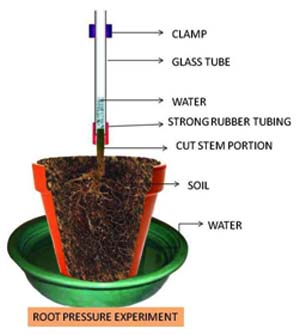 Ans:
Ans:
- The pressure exerted by the water molecules and absorbed by root hairs is called root pressure.
- Root pressure can push water upwards for few meters. This is enough to supply water from roots to leaves.
- When soil is watered, the salts present in the soil dissolved in the water and this becomes salt solution.
- As the amount of water provided to the soil is quite large, the solution will be a dilute salt solution. The cell sap is also a salt solution and is much concentrated than the salt solution present in the soil.
- The cell membrane of root hair is a semipermeable membrane and separates the cell sap from the salt solution in the soil.
- As a result, water flows from the soil into the cell sap from root hairs. Thus, roots absorb water and salts from the soil.
- The absorbed water and salts will move to the next cell by osmosis.
- Root pressure develops due to the absorption of water by roots and pushes the water upwards by few metres and is enough to supply water to leaves in small plants and small trees.
- Phloem is a food source for some animals. How can you justify this statement?
Ans:- The conduction of sugars by the phloem has been done by an experiment, by removing a ring of bark from the shoot to expose the wood.
- Remove all tissues from the centre outwards including the phloem.
- After a few days, when the tissues above and below the ring were analyzed. It was shown that food had accumulated above the ring, but was not present below it.
- If it is left for some more time, the stem increases in thickness immediately above the ring, but no growth occurred below it.
- So, any damage to the phloem all around the stem will prevent food from passing down to the roots and the tree will eventually die.
- Certain mammals secrete the bark of trees to get at the food stored in the phloem, especially during hard winters when food is scarce.
- Voles do this to young saplings at ground level and rabbits can do much damage to older ones.
- Read the given para and name the parts of the heart.
Ans: We have observed that the heart is divided into four chambers by muscular structure. Any structure that divides two chambers is known as septum.
Now let us try to name the septa present in the heart.
a) The septum that divides the two atria can be named as………………
b) The septum that divides the two ventricles can be named as………………
c) The septum that divides the atrium and ventricle can be named as………..
The holes that connect two chambers are called apertures. Let us try to name the apertures which connect the atria and ventricles.
d) The aperture that connecting the right atrium and right ventricle can be named as …………….
e) The aperture that is connecting the left atrium and left ventricle can be named as …………….
Any structure that closes an aperture, and allows one way movement of materials is called valve. Now, let us name the valves that are present in the chambers of the heart.
f) The valve that is present between left atrium and ventricle can be named as……….
g) The valve that is is present between right atrium and right ventricle can be named as…………..
A. a). Inter atrial septum.
b) Inter ventricular septum.
c) Inter atrial ventricular septum.
d) Right atrioventricular aperture.
e) Left atrioventricular aperture.
F) Bicuspid (Mitral) valve.
g) Tricuspid valve. - If the valves in veins of the legs fail to stop the flow of blood, what could be the consequences of this failure?
Ans:- Blood in the leg veins could only move towards the heart because of the presence of valves in them.
- They are one way valves.
- When we stand and walk the muscles around the leg veins constrict, squeezing the veins and pushing the blood towards the heart through a system of valves.
- If the valves in veins of the legs fail to stop flow of blood, the blood accumulates in the veins and causes swelling or inflammation and more clotting.
- Clotting can block or slow blood flow through the veins raising the blood pressure and possibly causing more damage.
- The swelling of the veins also results in varicose veins and spider veins.
- If varicose veins are untreated for long time, it leads to venous ulceration.
-
John prepared stethoscope with paper cup and string. Write down the procedure of preparation.
Ans:
Aim: Preparation of a model of stethoscope.
Material required: Paper cup and string.
Procedure: Take a paper and make it like a cup. Take a string or a thread. Attach this string to the paper cup. The paper cup will be placed on the chest and the string will be arranged to the opening of the ear. You feel some sound.
Observation: We can hear the heart beat.
Conclusion: Stethoscope is used by the doctors to measure heart beat.
-
How can you prove that the water is transported through the xylem?
Ans:
Aim: To prove that the water is transported through the xylem.
Apparatus: Potted plant with cut stem, strong rubber tube, glass tube, clamp.
Procedure: Take a regularly watered potted plant and cut the stem portion 1 cm above the ground level.
Then connect a glass tube with a strong rubber tube. The size of glass tube shall be equal to the size of the stem. Take care while joining the glass tube and stem, make sure that they are bound tightly so that water cannot escape from the tube. Now, pour some water in the glass tube until water level can be seen above the rubber tube. Mark the level of water (M1) in the tube. Keep the arrangement aside for 2 to 3 hours. Then observe and mark the water level (M2) in the glass tube.
Observation: It is observed that water level in the glass tube is increased.
Conclusion : Roots absorb water; this water enters into the xylem vessels through osmosis. From roots the water passes through xylem vessels into the stem.
From the cut stem water enters into the glass tube and the water level rises in the glass tube because of the water transport through xylem. - What is your inference about experiment with aphids?
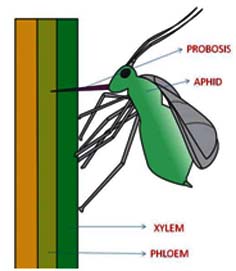 Ans:
Ans:
- Biologists about food transportation in plants with the help of aphids.
- We see aphids (green fly) clustering round the young stems of plants feeding on plant juices.
- To obtain this juice an aphid pierces the plant tissues with its long needle like organ ‘proboscis’.
- An aphid is killed while in the act of feeding and the body is then carefully cut away, leaving the hollow proboscis still inserted into the phloem.
- It is found that because the contents of the phloem sieve tubes are under slight pressure, the fluid slowly exudes from the cut end of the proboscis in the form of drops.
- These drops are then collected and analysed. The fluid is found to contain sugars and amino acids.
- It is inferred that food is transported in the phloem cells.
- Collect information about blood pressure of your school teachers or your neighbors and prepare a report on their health problems.
Ans:
Name of the person
Blood pressure
Health condition
1). Mr. Vijay
120/80
Normal
2). Mrs. Kamala
125/85
Irritation, worried
3). Mr. Raju
140/90
Fear, easily getting anger, high irritation, tiredness.
4). Mrs. Chandu
110/70
Weakness, dizziness, fainting
5). Mr. Rama Rao
140/100
Dizziness, fainting
-
What do you want to compare with the transportation in blood vessels?
Ans:- Transportation of blood in blood vessels can be compared with the (conduction of) transportation of water and food by xylem and phloem in the plants.
- Heart pumps oxygenated blood into the large artery systemic aorta. This artery divides into arteries and arterioles and distributes oxygenated blood to all the body parts and ends with capillaries.
- Veins start with capillaries. These form into venules, these join to form into veins. All these veins join to form superior and inferior vena cava. These large veins collect deoxygenated blood from body parts and bring to the heart.
- Heart pumps deoxygenated blood to lungs by pulmonary artery. For oxygenation and this oxygenated blood is sent to heart by pulmonary veins to heart. The circulation repeats.
- This transportation is compared to transportation in plants. Root hairs absorb water and mineral salts from soil by osmosis. This water enters into xylem and transport to the stem and leaves by root pressure.
- From leaves excess water is sent outside through stomata by transpiration as water vapour. This water vapour cools down and forms as rain. This is absorbed by roots and the cycle continues.
- Transpiration helps in the formation of clouds and occurrence of rains. We can appreciate nature’s wonderful activities where it cannot be reached to the human brain.
- How do you feel about transportation of water in huge trees?
Ans:- Water is absorbed by root hairs and there is a push from below due to root pressure on the column of water in the xylem vessels.
- Root pressure can push water upwards by not more than a few meters. This is enough to supply water from roots to leaves in small herbaceous plants.
- However there are huge trees, as tall as 120 m high. In such trees, water has to be pushed several meters upwards against earth’s gravitational pull.
- Water is absorbed by osmosis from the soil by the root hairs and is passed into the xylem vessels which form a continuous system of tubes through root and stem into the leaves.
- 2% of water is utilized by the plant and the excess 98% of water evaporates and passes into the atmosphere through stomata in the leaves.
- The evaporation creates the main pull from above root pressure which gives a variable and minor push from below. The result is continuous column of moving water, the transpiration stream is maintained in the hung trees.
- After reading this lesson, what precautions you would suggest to your elders about edema?
Ans: Edema is formally known as dropsy or hydroxyl. This is abnormal accumulation of fluid in the interstitial cells which is located beneath the skin or one more cavities of the body. It is clinically shown as swelling.
Generally this occurs by inactivity and is clearer in elders; as a result the lower part of the legs will be swollen.
Simple methods recommended by healthcare professionals are follows:- Compression stocking: It reduces the fluid buildup and improves circulation.
- Movement: Sitting and standing for too long promotes the fluid flow into the legs specially travelling long in bus and train. Leg exercise increases circulation while preventing fluid retention in the legs and feet moving and using the leg muscles helps pump excess fluid back to the heart.
People with swollen feet or legs, shall keep the legs elevated above the level of heart for 30 minutes a day or 3 or 4 times a day. - Massage the affected areas with firm pressure towards the heart which helps to move the excess fluid away from swelling.
- Low salt diet: Taking low salt diet can prevent or reduce swelling. Reducing the amount of salt including table salt in the diet may prevent swelling problems from reoccurring.
- Avoid temperature changes: Temperature changes to very hot or cold can make edema worse. This can happen when going from hot outdoors into an air conditioner building or vice versa.
Avoid hot baths, hot showers when swelling occurs. - Diuretics, medications help increase urine output, excrete water and sodium.
- Reducing swelling symptoms: Diuretics can be used carefully because much use of medication can remove excess fluid too rapidly and lead to lower blood pressure or kidney impairment.
- Homeopathetic treatment: It has not been proved effective by scientific research. People should discuss them with doctor before taking this path.
- Give an account of valves in the human heart.

Ans:- Heart has valves which allow the flow of blood only in one direction and prevents its flow in backward direction. Valves are held in position by tough connective tissue called chordae tendineae.
- Right auriculo – ventricular aperture is controlled by a tricuspid valve which allows the blood flow from right auricle to right ventricle.
- Left auriculo – ventricular aperture is provided with bicuspid valve which controls the blood flow left auricle to left ventricle.
- At the origin of pulmonary aorta in the right ventricle three half-moon shaped or semilunar valves present which allow the blood to flow from right ventricle into pulmonary aorta.
- At the origin of systemic aorta in the left ventricle there are three semilunar aortic valves which allow the blood flow from left ventricle into the aorta.
- What is hypertension? How is it caused? Mention the preventive steps to be taken. How is B.P. measured?
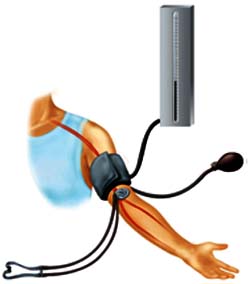 Sphygmomanometer Ans:
Sphygmomanometer Ans:
- Blood flows in the blood vessels with a specific pressure called Blood Pressure (B.P.). In healthy individuals, the normal B.P. is 120/80.
- The numerator (120) represents Systolic pressure and the denominator (80) represents Diastolic pressure.
- Blood pressure is measured by the doctors by an instrument called Sphygmomanometer.
- However in some people blood pressure is very high more than normal B.P. This condition is called Hypertension.
- One of the reasons for hypertension is the blocking of arteries by cholesterol. Constant stress and strain for a long time, improper functioning of kidneys, smoking and alcohol consumption are the reasons for high B.P.
-
Hypertension can be prevented by diet control, moderate exercise, avoiding stress and strain, avoiding alcohol consumption and smoking.
- What are the differences between right ventricle and left ventricle?
Ans:Right ventricle
Left ventricle
1). Smaller in size.
1).larger in size.
2). Pulmonary artery takes its origin.
2). Aorta takes its origin.
3). Receives deoxygenated blood from right auricle.
3). Receives oxygenated blood from left auricle.
4). Pumps deoxygenated blood to lungs.
4). Pumps oxygenated blood to all parts of the body except lungs.
5). Tricuspid valve guards the auriculo-ventricular aperture.
5). Bicuspid valve (mitral) guards the left auriculo – ventricular aperture.
- Draw a block diagram to explain single and double circulation. Write differences between them?
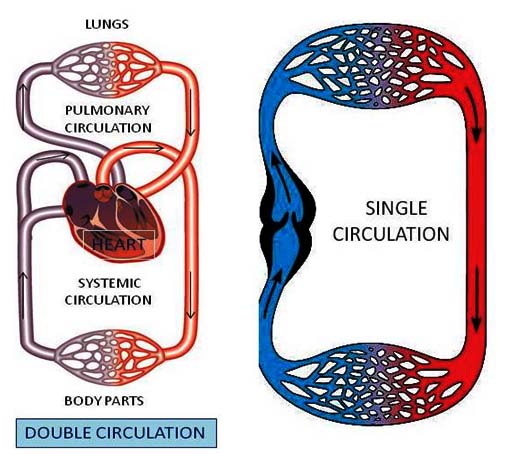
TWO MARKS QUESTIONS:
-
Which type of blood vessels carry blood away from the heart?
Ans:
Blood vessels that carry blood away from heart:- The largest artery is the aorta, which arises from the left ventricle and carries oxygenated blood to all the body parts except lungs.
- The pulmonary aorta originates in the right ventricle. It is divided into two - right and left pulmonary arteries and they carry deoxygenated blood to right and left lungs. All the arteries except pulmonary arteries carry oxygenated blood to the muscles of heart.
- Pair of coronary arteries carries oxygenated blood to the muscles of heart.
-
What are the three main types of blood vessels in the body?
Ans:
The three main types of blood vessels in the human body are:- Arteries
- Veins and
- Capillaries.
- Which is the largest artery in the body? Why is it big in size?
Ans: The largest artery is the aorta, which originates from the left ventricle.
It is bigger in size because it supplies oxygenated blood to various organs in the body, from head to toes and fingers.
- Which blood vessel carries blood for oxygenation?
Ans: From the upper part of the right ventricle Pulmonary artery arises. This supplies deoxygenated blood to the lungs for oxygenation.
All the arteries carry oxygenated blood but only the exception is – though the pulmonary artery is the artery that carries deoxygenated blood to lungs for oxygenation.
- What will happen if cell sap of root hair cells contains high concentration of ions?
Ans:- The cell membrane of root hair is a semi permeable membrane. It allows the movement of molecules from low concentration to high concentration.
- The root hair cells contain high concentration of ions and the salt concentration in the water from soil is less concentration.
- As a result, water flows from the soil into the cell sap of root hairs.
- Describe the blood vessels that carry away blood from human heart?
Ans:- The systemic aorta or the largest artery AORTA originates from left ventricle and carries oxygenated blood to all the body parts except lungs.
- The pulmonary artery originates in the right ventricle. Outside the heart, it divides into two branches – right and left pulmonary arteries carry deoxygenated blood to lungs.
- There is a pair of arteries carries oxygenated blood to the heart muscle.
- What are structural and functional difference of arteries, veins and capillaries?
Ans:- The walls of arteries are made up of muscle fibers and are elastic. When the blood enters with a pressure into the arteries then walls will stretch and this enables the arteries to withstand the increase in the pressure without bursting.
- Veins are closer to the skin and contain valves. They are made of connective tissue called Tunica adventitia externa. Middle layer has bands of smooth muscle called Tunica media. Generally veins are thin, lined internally with endothelial cells ‘Tunica intina’.
- Blood capillaries are microscopic vessels made of single layer of cells. They allow diffusion of various substances. They establish continuity between arterioles and venules. ‘Capillaries’ is a Latin word which means “hair” because they were as thin as hair.
-
What is coagulation of blood? Which types of blood cells are helpful for this?
Ans:
When there is an injury or a cut, the blood flows out of the wound for only a short time. Chemical reactions involved in the blood coagulation.
Then the cut is filled with a reddish solid material. This material is called ‘blood clot’, which is formed by blood platelets or Thrombocytes. They release an enzyme called Thrombokinase.
- Describe the external features of heart?
Ans:- Heart is a hollow organ. It is situated slightly towards left side in the middle of the thoracic cavity.
- It is made up of cardiac muscle.
- It is pear shaped (conical) winder at the anterior and narrower at the posterior end.
- It is protected by ribcage and vertebral column.
- Generally it is the size of the one’s fist.
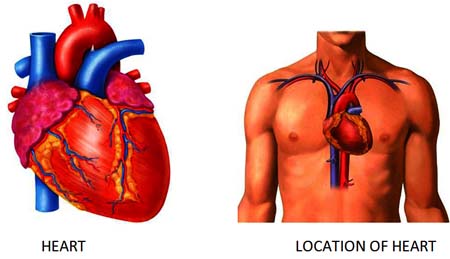
ONE MARK QUESTIONS:
- Are roots directly contacted with water?
Ans: The small hair like roots which arise from the roots contact directly with water present in the soil.
- What is heart beat?
Ans: The word heart beat represents one contraction and one relaxation of heart. The contraction phase is called systole and relaxation phase is called diastole.
- Why is there more pressure in arteries than veins?
Ans: The arteries receive blood from heart. So blood pressure is more.
- The wall of left ventricle is thicker than the wall of the right ventricle? Give the reason.
Ans: As it pumps blood to more distant parts of the body (such as fingers and toes) the left ventricle is thicker than the right ventricle.
- What is transpiration?
Ans: The process of loss of water from plants in the form of water vapour through stomata is called transpiration.
- On which does the rate of transpiration depend?
Ans: The rate of transpiration depends on the opening and closing of stomata.
- Name the cells that surround the stomata?
Ans: Stomata are surrounded by two kidneys or dumb bell shaped guard cells.
- How does opening and closing of stomata take place?
Ans: When guard cells are filled with water, the walls of the cells are pulled away and the pores open up. When the water content is low the walls of guard cells collapse and close the stomata.
- What are the factors that the transpiration depends on?
Ans: Several factors such as temperature, humidity of wind, velocity, soil water content etc. determine the opening and closing of stomata and the rate of transpiration.
- How is transpiration helpful for the leaf surface?
Ans: Transpiration helps to keep the leaf surface at a lower temperature than the surrounding air.
- How much water is used by the plants from the absorbed water?
Ans: From the absorbed water, less than 2% is used by the plants for its vital activities.
- What happens to your feet after overnight journey in sitting position without moving?
Ans: Lower part of the legs will swell. This can be clearly seen among the elders.
- How do they feel that their footwear is?
Ans: They feel that our footwear is a bit tighter.
- Why is it advised to take low amount of salt in food?
Ans: Because the salt (sodium) levels will be more in accumulated water at the time of edema. If salt is not reduced, the salt levels increase.
- What precaution will be taken by edema effected people while sleeping?
Ans: People with swollen feet or legs shall keep the legs elevated above the level of heart while sleeping.
-
What is the reason for edema?
Ans: Edema may occur due to inactivity. Fluid retention develops after fluid flows down into the lower extremities causing swelling. - What do you mean by lymph in Latin?
Ans: In Latin, lymph means water.
- Why is it advisable to take limited food during journey?
Ans: The body movements will be less in the journey, so taking little food is good for easy digestion. - How many layers are covering the heart?
Ans: Two thin and transparent layers are covering the heart.
- What is the shape of the heart?
Ans: Heart is a pear shaped structure, triangle in outline, wider at the anterior end and narrower at the posterior end.
- How many chambers are there in the heart?
Ans: There are four chambers (2 atria, 2 ventricles) in the heart.
- Do you think that the stiffness / rigidity of blood vessel is something to do with circulation?
Ans: The walls of the arteries are stiff/rigid. They are made up of muscle fibre and are elastic.
When heart pumps blood into the arteries, the blood enters with a pressure into the arteries. Their walls will stretch and this enables the arteries to withstand the increase in the pressure without bursting.
- What is heart attack?
Ans: There is a pair of coronary arteries. They carry oxygenated blood to the heart muscle. In some people, the coronary arteries get blocked with age. When this happens, muscle cells in the heart do not receive oxygenated blood and stop working. This is called “heart attack” and if not treated immediately the patient may die due to failure of heart.
When coronary arteries get blocked due to accumulation of fat in blood vessels, muscle cells in the heart do not receive oxygenated blood and stop working. This is also a reason of heart attack.
- Why are the valves in the heart held in position?
Ans: The valves are held in position by tough connective tissue strands. These strands are called chordaetendinae.
Tags
- TS 10th
- TS 10th Study Material
- TS 10th Biology
- Transportation
- The Circulatory system study material
- tenth class biology
- Transportation – The Circulatory System
- sakshi education studymaterials
- TS 10th class biology study materials
- 10th class biology study materials
- TS SSC Biology Notes
- Transportation in Biology
- TS Board Class 10 Biology
- Heart Structure
- Blood Vessels
- Lymphatic System
- Blood Circulation Class 10



